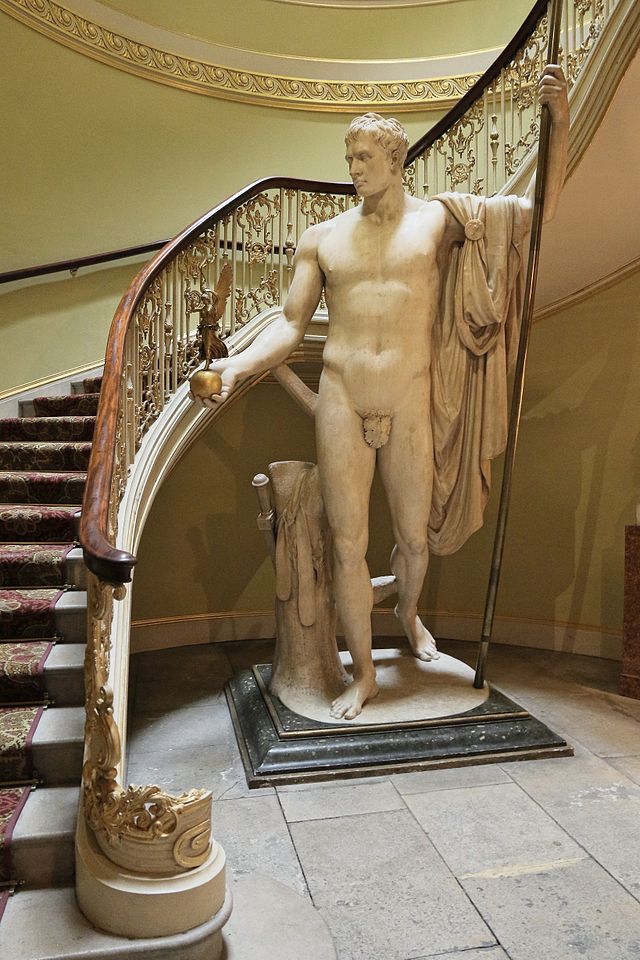Two weeks ago, I finally wrote “The End” on the rough draft of my next book, Listen to the Moon, out in January. (It’s book 3 in my Lively St. Lemeston series, starring Toogood and Sukey, the valet and maid from book 1.) Woooo!
But when I say rough, I mean ROUGH. Part of my process for going from “rough draft” to “clean draft I can send to my friends with only a minimum of shame” involves looking up a lot of words in the Oxford English Dictionary (thank god, the Seattle Public Library has a subscription) to see if they were in use during the Regency.
One word I looked up was “epergne.” I had the vague idea this was some kind of large silver thing used as a centerpiece on a dinner table. Maybe a vase? But I discovered to my surprise that it is a “centre-dish, or centre ornament for the dinner-table, now often in a branched form, each branch supporting a small dish for dessert or the like, or a vase for flowers. (From our quots. it appears that the earlier use was chiefly to hold pickles.)” !!!
The relevant quotations are:
“1761 Bill of Fare in Pennant London (1813) 562, 2 Grand Epergnes filled with fine Pickles.[…]
1804 Verses to Dr. Warton in Ann. Reg. 928 [His pupils present him with an epergne on his resigning the head-mastership of Winchester, hoping that it may remind him ‘of “Pickles” left behind’].”
[ETA: I want to clarify that this doesn’t mean epergnes were ONLY used to hold pickles. Another quotation, from 1779, mentions using one for sweetmeats. But I think the 1804 quote makes the strength of the association clear.]
Of course, this is slightly less limiting than it might sound to us—while “pickles” have come to refer primarily to pickled cucumbers, in the Regency it could mean any pickled dish. Take a look at “Pickle” in the index of Hannah Glasse’s Art of Cookery to get an idea of the possible variety! Ox palates, red currants, walnuts, and “elder shoots in imitation of bamboo” are just a few of the most picturesque recipes.

Epergne by Thomas Pitts, London, 1761. Image credit: Daderot via Wikimedia Commons. Notice the pineapple topper! We’ll be talking more about pineapples later.
This got me thinking about other kinds of dishes with specific purposes that have passed out of fashion. A few of my favorites:
1. The seau à glace, or ice-pail, used for serving ice cream at table. Assembled, it looked like this:

Flight & Barr, Worcester, 1782-1802. Image credit: Daderot via Wikimedia Commons.
The lid is filled with ice, and the central bowl can be lifted out and the bottom of the pail filled with more ice. In this way ice cream can be kept cold on the dinner table for up to four hours (!), if salt is added to the ice. To see one in use, scroll to the bottom of Ivan Day’s wonderful page on Georgian and Victorian ice cream (and look in the left sidebar for a picture of one completely disassembled).
If you’re as charmed by this dish as I am, some helpful soul has assembled an entire Pinterest board of them, and they’re all wonderful!
2. The turtle soup tureen. “Turtle dinners,” or dinners at which turtle soup was the central dish, were a popular form of lavish entertainment in the second half of the eighteenth century and the early nineteenth.
(They were especially popular at civic celebrations like the Lord Mayor’s Feast, etc. The association was strong enough by 1834 that I came across this quotation from Blackwood’s Magazine in the OED in the entry for “swallow, v.”: “Dosy, who sate in open-mouthed wonder, swallowing them [sc. his stories] down as a common-councilman swallows turtle.”)
I also read a quote (which I can’t now dig up but I’ll give it another shot this afternoon) about one enthusiastic candidate’s wife attending five turtle dinners in a week as part of campaigning for her husband during the 1754 general election. Oy!
You can read more about this custom (and about where all the turtles came from) in this article.
(Mock turtle soup was created to cheaply imitate the fashionable delicacy. As Wikipedia says, “It often uses brains and organ meats such as calf’s head or a calf’s foot to duplicate the texture and flavour of the original’s turtle meat.” Heinz used to make a canned variety that only went out of production in the 1970s—you can see a picture of a can as well as some old recipes here.)
Anyway, special tureens were made shaped like turtles to hold the soup. I’ve seen them now and then in museums; the article linked above contains a photo of a splendid example in silver at the Minneapolis Institute of the Arts.
3. And possibly my favorite for sheer whimsy…the pineapple stand! The pineapple was a fad luxury item in eighteenth and early nineteenth century England in rather the way tulips were in 17th century Holland. By the Regency the initial craze, which led to things like the building of a giant stone pineapple-shaped conservatory, had passed…

The Dunmore Pineapple, built by the Earl of Dunmore in 1761. Image credit: Davidw82, via Wikimedia Commons.
…but pineapples remained a popular display of wealth and glamor. Whole pineapples were used as table centerpieces (and sometimes were taken away again by the caterers at the end of the night without being eaten!). This blog post contains two beautiful examples of porcelain pineapple stands by Spode, one from 1813 and one from 1820, with an explanation of their use. These are clearly designed for the whole pineapple to stand in the center surrounded by sliced pineapple, as is this lovely boat-shaped stand, but some, like this cut glass one…clearly are not.
Honorable mention goes to the Solomon’s Temple pudding mold, popular for nearly two centuries. You can see pictures of a variety of molds AND, incredibly, a video of the finished pudding wobbling comically, at this awesome blog post by Ivan Day, who explains, “Because it is made of flummery, which is a kind of opaque milk jelly, the central obelisk wobbles and cavorts in a most entertaining manner, while the four little cones shake, rattle and roll in a very naughty way.”
What’s your favorite single-purpose serving dish? Teapots? Salt and pepper shakers? Gravy boats? Tell me all about it!












